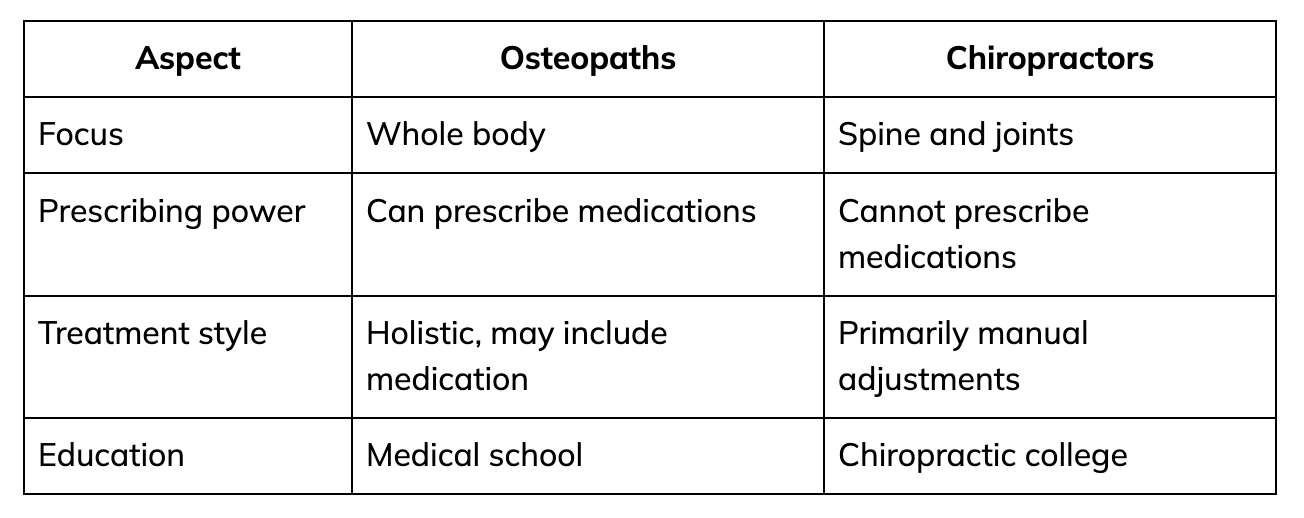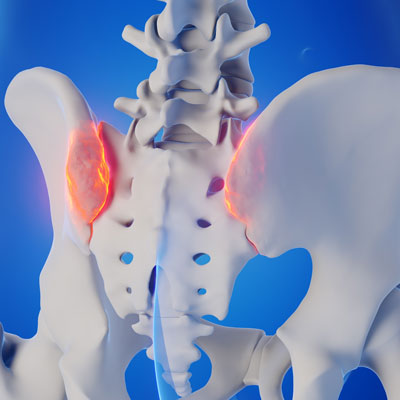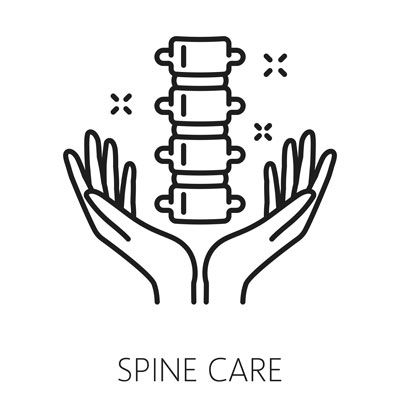Osteopath vs Chiropractic: Understanding the Key Differences

As a chiropractor in Kennington, I often clarify the distinctions in “Osteopath vs Chiropractic: Understanding the Key Differences.” Osteopathy and chiropractic both address the body’s structure to improve health but focus differently. Osteopaths use a broader range of techniques affecting the entire body and emphasize the body’s ability to heal itself. In contrast, chiropractors primarily focus on precise spinal adjustments to alleviate specific issues. While osteopaths may treat a wider range of symptoms, including digestive and respiratory conditions, chiropractors specialize in correcting spinal misalignments, which can significantly impact nerve function and overall physical wellness.
What Are Osteopaths?
Osteopaths are medical professionals who take a holistic approach to treating the whole body. They undergo extensive training, including:
- Four years of undergraduate college
- Four years of osteopathic medical school
- Clinical rotations and residency
One of the key advantages of osteopaths is their ability to prescribe medications. This sets them apart from chiropractors and allows them to offer a more comprehensive treatment plan.
Osteopaths use a technique called osteopathic manipulative medicine (OMM) to diagnose, treat, and prevent illness or injury. They focus on the musculoskeletal system, believing that the body’s structure and function are closely related.
Understanding Chiropractors
Chiropractors, on the other hand, specialize in treating musculoskeletal issues, with a primary focus on spinal adjustments. Their training typically includes:
- Undergraduate studies
- Four years at a chiropractic college
- Clinical experience
Unlike osteopaths, chiropractors cannot prescribe medications. Their treatment approach relies heavily on manual adjustments and other non-invasive techniques.
Key Differences Between Osteopaths and Chiropractors

Conditions Treated
Both osteopaths and chiropractors can treat a variety of conditions, including:
- Back pain
- Neck pain
- Tennis elbow
- Arthritis
- Chronic pain
However, the approach to treatment may differ. For example, an osteopath might use a combination of manual therapy and prescribed medication for chronic pain, while a chiropractor would focus on spinal adjustments and lifestyle recommendations.
Choosing the Right Professional
When deciding between an osteopath and a chiropractor, consider:
- Your specific health needs
- Personal preferences for treatment style
- Whether you might need prescription medication
Remember, both professionals can use imaging techniques like X-rays and MRIs to aid in diagnosis. However, their interpretation and subsequent treatment plans may differ.
Spinal Adjustments: A Closer Look
Both osteopaths and chiropractors perform spinal adjustments, but their techniques may vary. Here’s a quick rundown:
- Chiropractic adjustment: Often involves quick, precise movements to realign the spine.
- Osteopathic manipulation: May use gentler, more fluid movements and consider the body as a whole.
The Ongoing Debate
It’s worth noting that there’s ongoing research and some controversy in the field. Some studies suggest that spinal manipulation can be effective for certain types of back pain, while others question its long-term benefits.
As with any medical treatment, it’s essential to consult with your primary care physician and consider all options before deciding on a course of treatment.
Remember, whether you choose an osteopath or a chiropractor, the goal is to improve your overall health and well-being. Both professionals can play a valuable role in managing pain and promoting a healthier lifestyle.
Frequently Asked Questions
Are osteopaths better than chiropractors?
It depends on the individual’s condition and treatment preferences. Both osteopaths and chiropractors focus on the musculoskeletal system but have different approaches and philosophies. Osteopaths tend to use a broader range of techniques, including soft tissue stretching, muscle relaxation, and manipulation of joints. Chiropractors primarily focus on spinal adjustments and manipulations to correct misalignments. The best choice depends on the specific health issue and the patient’s personal preference for treatment style.
Is osteopathic manipulation the same as chiropractic?
No, osteopathic manipulation and chiropractic care are not the same, although they have similarities. Osteopathic manipulative treatment (OMT) involves a variety of techniques including stretching, gentle pressure, and resistance to improve mobility, relieve pain, and enhance overall health. Chiropractors mainly use spinal manipulations or adjustments to correct misalignments, reduce pain, and improve function. While both aim to treat musculoskeletal issues, their methodologies and overall philosophies differ.
What are the disadvantages of osteopathy?
- Availability and Coverage: Osteopathic treatments may not be covered by all insurance plans, and availability can vary depending on the region.
- Effectiveness: While many people find relief with osteopathy, scientific evidence supporting its efficacy is mixed, particularly for chronic conditions.
- Potential Side Effects: As with any manual therapy, there can be side effects such as soreness, fatigue, or mild discomfort after treatment.
- Not Suitable for All Conditions: Osteopathy might not be appropriate for severe or specific medical conditions that require different medical interventions.
Do osteopaths do cracking?
Yes, osteopaths can perform manipulations that result in joint “cracking” sounds, similar to chiropractic adjustments. This is part of osteopathic manipulative treatment (OMT) and is used to improve joint mobility and relieve pain. However, osteopaths use a variety of other techniques as well, not relying solely on joint cracking.






